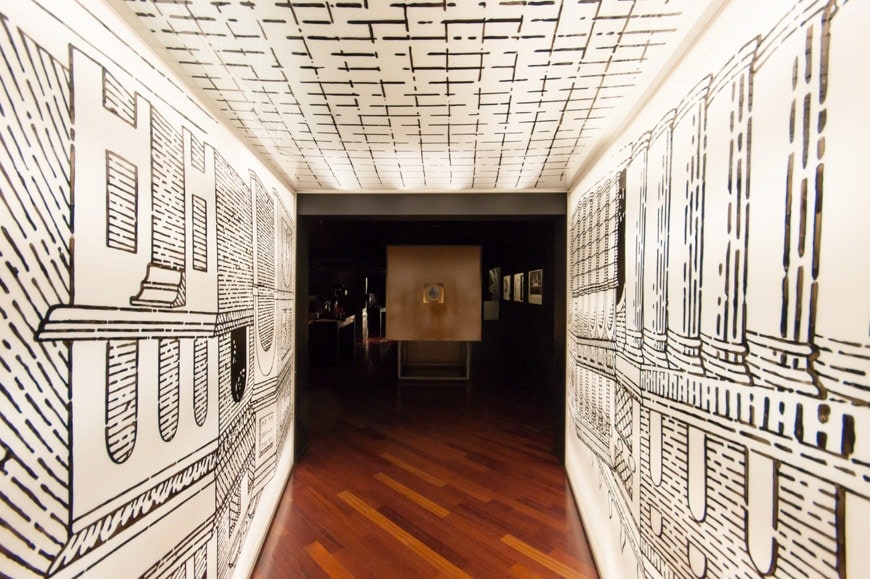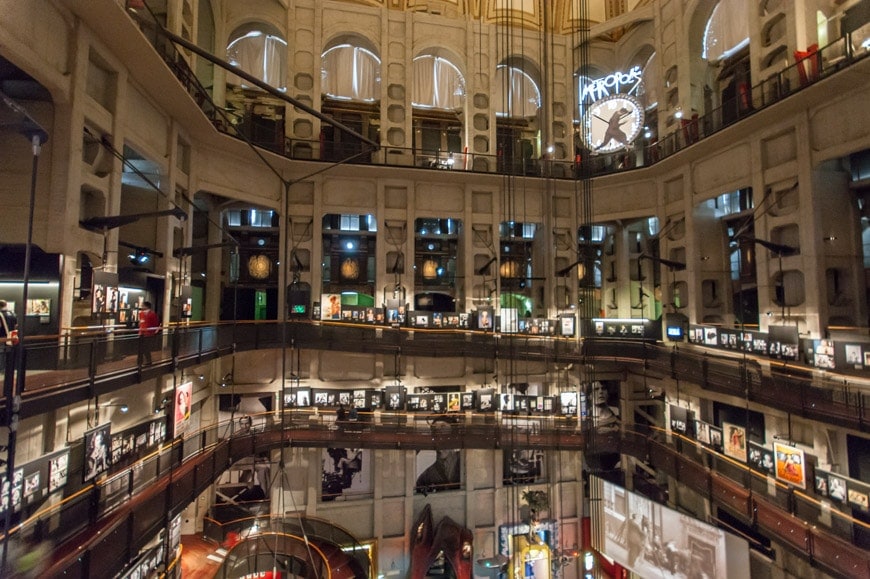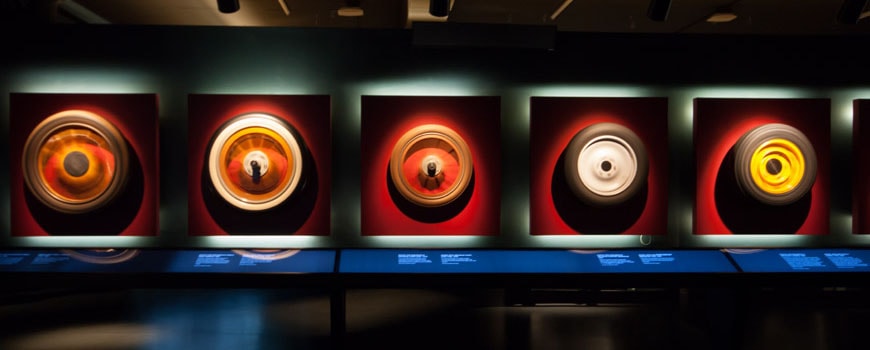National Museum of Cinema & Mole Antonelliana, Turin
Piemonte, Italy
How our readers rate this museum (you can vote)
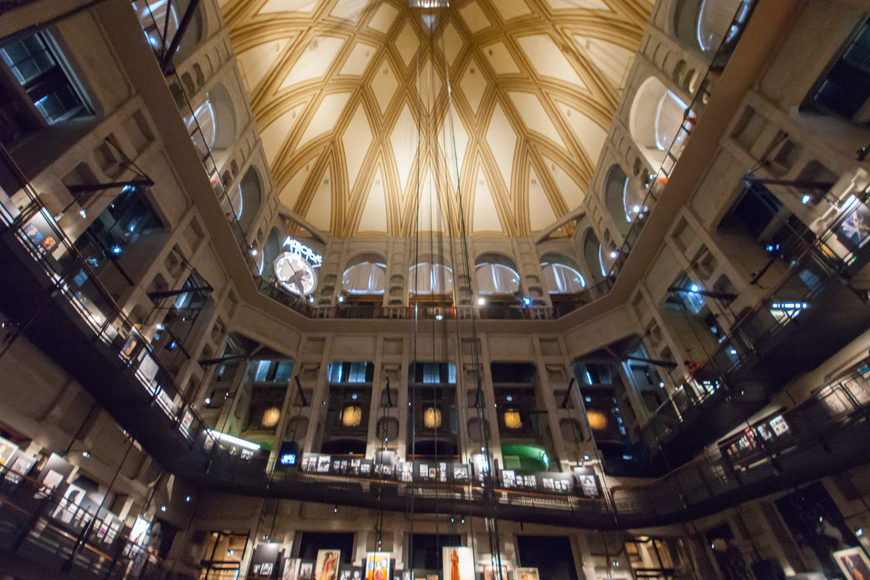
The Museo Nazionale del Cinema (National Cinema Museum) in Turin is the most important museum in Italy dedicated to the history of cinema and motion pictures from origins to the present day.
The museum is housed in the Mole Antonelliana, an imposing 19th-century building designed by architect Alessandro Antonelli, from whom it takes its name, which is a major landmark building and the architectural symbol of the city of Turin.
The museum’s permanent exhibition is a visual journey across the history of the moving image from the archeology of cinema to television. The exhibition is divided into various sections and presents rare artifacts, films, scene objects and sets, posters, reconstructions, and models. Inside the Aula del Tempio (Temple’s room) the visitors, lying on several chaise longues, can watch various film clips projected on large screens, hanging from the walls, easily losing the sense of time. A glass elevator, moving up and down in the huge domed hall, gives access to a 360° panoramic viewpoint, 85 meters / 280 feet above the street level.
The Museo del Cinema organizes temporary exhibitions, special events, and educational activities, particularly aimed at children and schools.
The building of the museum, which is accessible to people with disabilities, also includes a media-library, a restaurant, and a bookshop.
National Museum of Cinema of Turin and Mole Antonelliana – a historical and architectural analysis
The Museum of Cinema was first opened in 1958 in the Chiablese palace in Turin, where it remained until 1985 when it was closed for safety reasons.
In 1992 the Maria Adriana Prolo – Museo Nazionale del Cinema Foundation was founded to create a new museum and, in August 2000, the National Museum of Cinema of Turin was opened to the public in a new prestigious location, the Mole Antonelliana.
Views of the Mole Antonelliana in Turin. Photo © Inexhibit
The history of the Mole Antonelliana
The works for the construction of the Mole Antonelliana began in 1863.
Architect Alessandro Antonelli was commissioned to design a new synagogue, conceived to celebrate the religious freedom established by law in 1843. The events soon turned to be problematic because Antonelli, who was calling his project “a vertical dream”, changed the original design many times, progressively increasing the planned building height from 47 to 113 meters (from 154 to 370 feet) until the works came to a stop due to financial difficulties in 1869. This already difficult situation was worsened by structural problems and, in 1873, the Jewish community eventually withdrawn from the project and sold the building to the Municipality of Turin, which converted it into a monument for the unification of Italy, recently achieved.
The building was completed in 1889, not by Alessandro Antonelli but under the direction of his son, Costanzo. It was – with its height of 167,5 meters – the tallest brick building in Europe.
The museum
The bizarre architecture of the Mole seems to have found his most appropriate destination becoming the Museum of Cinema. It appears that the oneiric and immaterial dimension of cinema and the “vertical dream” of Antonelli has finally met, after 150 years, providing the museum of a unique location.
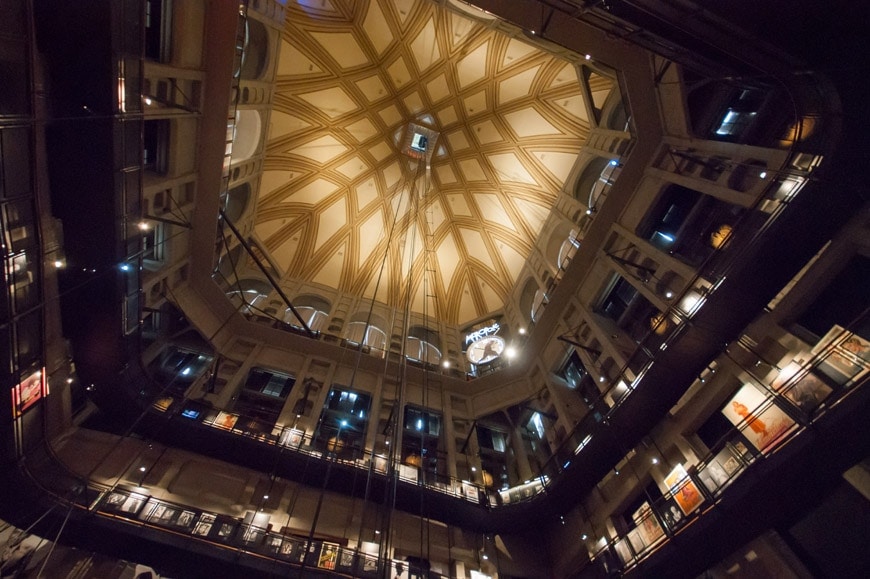
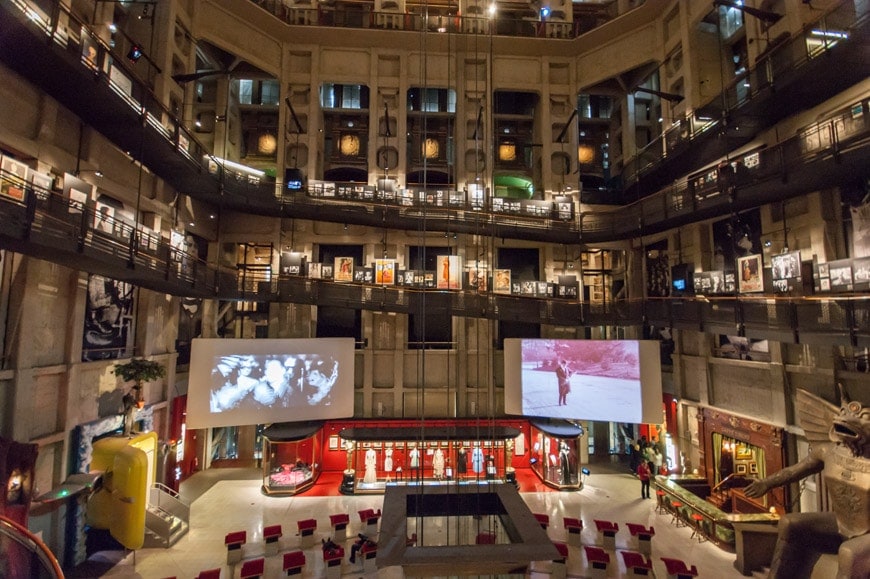
Views of the Temple Hall (Sala del Tempio), and details of the permanent exhibition sections “Archeology of Cinema” and “The Cinema Machine”. Photos © Inexhibit
By touring the museum, the visitor is completely involved in the Cinema universe and the world of imagination; if the first section, entitled “The Archeology of Cinema”, narrates the early age of Cinema through movie pioneers’ equipment and objects, and the section “The Cinema Machine” depicts the complex process of movie-making, the core of the museum is, without doubt, the Temple Hall, where the stunning dimensions and the proportions of the surrounding space plays a fundamental role in people’s entanglement.
As being inside a theatrical stage, by lying down on several red-colored chaise-longues, the visitors enjoy a multiform show: their sight bounces back and forth between movie-screen where films are projected on rotation and the impressive domed hall, with its panoramic elevator going up and down just in the middle of the large void, the spiral ramp running along the perimeter and the “pop” reconstruction of movie sets.
By rising the ramp, which recalls the shape of a cine film and is used for temporary exhibitions, people can overlook the entire hall; the half-lit space, spotted by light projectors, and the effect produced by the incessant journey of the elevator, engage them in what looks like a scene from the movie Metropolis; not by chance a reconstruction of its famous clock has been placed at the upper end of the ramp so to dominate the whole space.

The “cinema” in the Temple Hall consists of many chaise longues from which the visitors can watch excerpts from famous films, projected on four screens positioned in the hall corners. Photo © Inexhibit
The exhibition on the spiraling ramp in the Temple Hall presents several exhibits also related to celebrated movie stars, such as Audrey Hepburn and Grace Kelly. Photos © Inexhibit
copyright Inexhibit 2025 - ISSN: 2283-5474



 (9 votes, average: 3.67 out of 5)
(9 votes, average: 3.67 out of 5)

